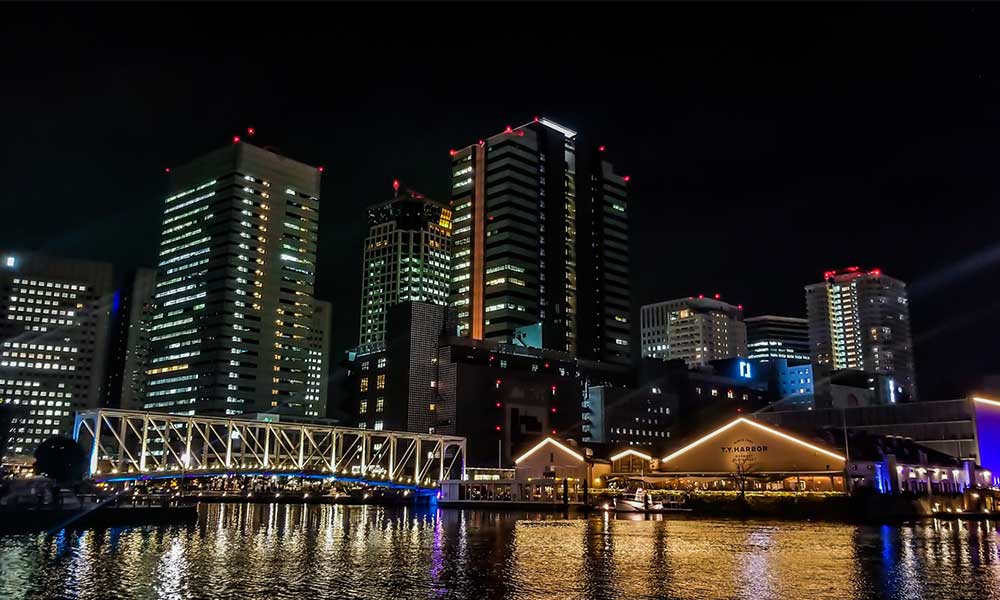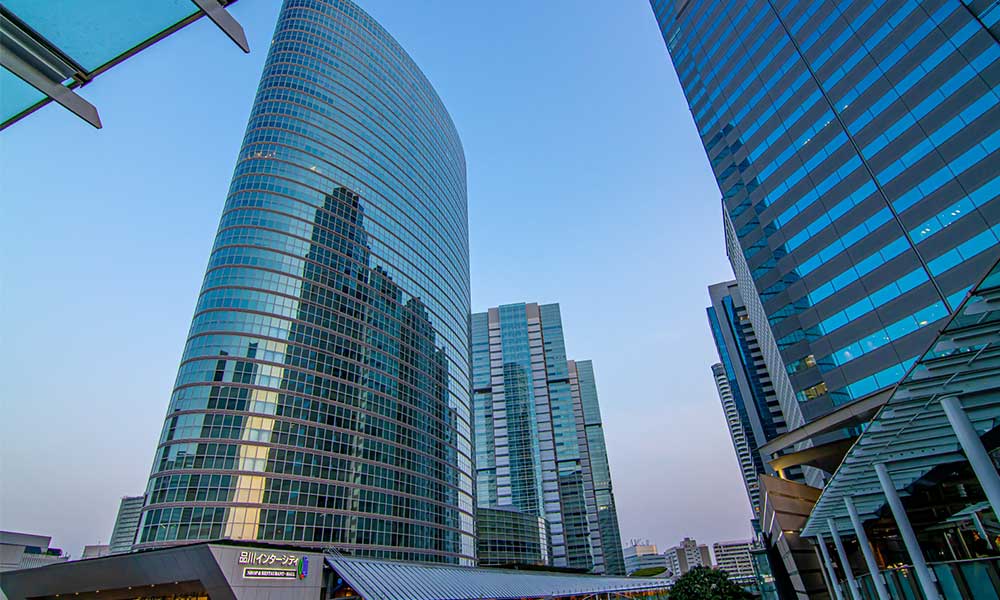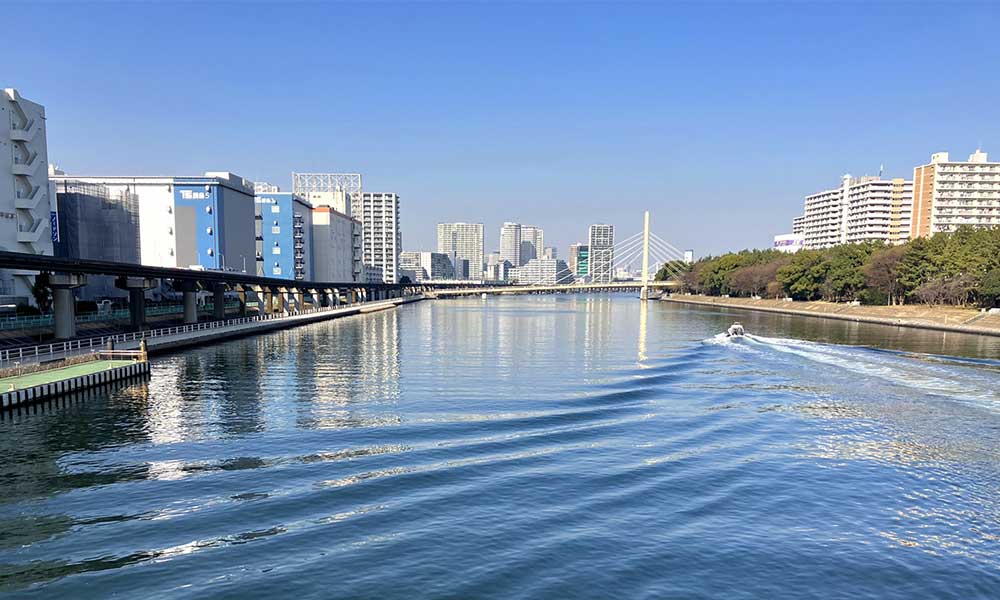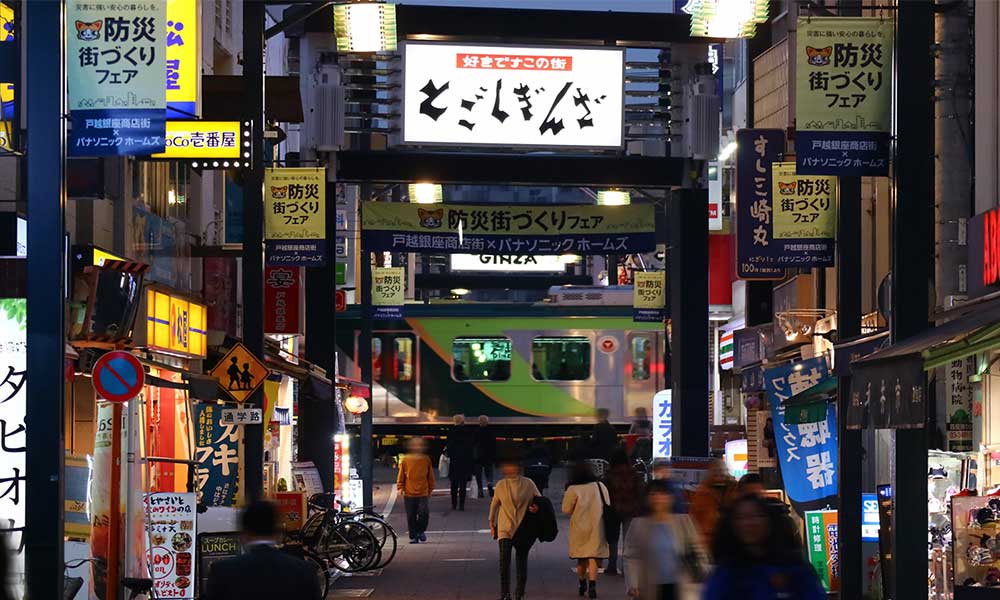Shinagawa ward, Tokyo東京都品川区
Living in Shinagawa ward, Tokyo

We have Summarized the livability of Shinagawa ward, Tokyo.
23 WARD AREA23区地域
-
- CHIYODA WARD 千代田区
-
- CHUOU WARD 中央区
-
- MINATO WARD 港区
-
- SHINJYUKU WARD 新宿区
-
- BUNKYO WARD 文京区
-
- TAITO WARD 台東区
-
- SUMIDA WARD 墨田区
-
- KOTO WARD 江東区
-
- SHINAGAWA WARD 品川区
-
- MEGURO WARD 目黒区
-
- OTA WARD 大田区
-
- SETAGAYA WARD 世田谷区
-
- SHIBUYA WARD 渋谷区
-
- NAKANO WARD 中野区
-
- SUGINAMI WARD 杉並区
-
- TOSHIMA WARD 豊島区
-
- KITA WARD 北区
-
- ARAKAWA WARD 荒川区
-
- ITABASHI WARD 板橋区
-
- NERIMA WARD 練馬区
-
- ADACHI WARD 足立区
-
- KATSUSHIKA WARD 葛飾区
-
- EDOGAWA WARD 江戸川区
CONTENTS
- What kind of place is Shinagawa ward, Tokyo?
- Shinagawa wardPR video
- How is the traffic situation in Shinagawa ward?
- How are the rent and land prices in Shinagawa ward?
- How is childcare and education in Shinagawa ward?
- How about shopping in Shinagawa ward?
- How about jobs and recruitment in Shinagawa ward?
- Shinagawa ward’s unique subsidy/subsidy system
What kind of place is Shinagawa ward, Tokyo?

Shinagawa Ward: A sophisticated business district and a city with many sightseeing spots
Shinagawa Ward is located in the southern part of Tokyo’s 23 wards, and has an area of approximately 22.84 square kilometers.
It has a population of approximately 404,000 people and approximately 228,000 households (as of February 2023).
It borders Minato Ward and Shibuya Ward to the north, Minato Ward and Koto Ward to the east, Ota Ward to the south, and Meguro Ward to the west. The west side is the Yamanote Plateau, and the east side faces Tokyo Bay, with most of the area being reclaimed land.
In 1947, Shinagawa Ward and Ebara Ward merged to form the current Shinagawa Ward.
Of the many candidates for the new ward name, the old Shinagawa Ward was chosen as it was.
Since the early Edo period, Shinagawa has been home to the first post station on the Tokaido Highway, Shinagawa-shuku, and has developed as a post town since ancient times.
In the Meiji period, the railway was quickly established, and large factories appeared one after another in the city, and industrialization progressed.
After that, following the Great Kanto Earthquake, fields were transformed into factories one after another, and the development of the railway network also accelerated, and Shinagawa grew into the central part of the Keihin Industrial Zone.
Shinagawa Ward is roughly divided into five areas.
The Shinagawa district is an area where the streetscape of Shinagawa-shuku remains strong, and there are many temples and shrines, making it a charming area, while the Tennozu and Higashi-Shinagawa areas have a modern side with office buildings lined up.
The Osaki district is an area that includes major stations in the ward, such as Gotanda Station and Meguro Station, and is the central area of the ward with office buildings and apartments lined up. The cherry blossom trees along the Meguro River are a popular spot that attracts many cherry blossom viewers every year.
The Ebara district has many lively shopping streets such as Togoshi Ginza and Musashi-Koyama, and many residential areas are also located in this area.
The Oi district is a lively area with commercial facilities and office buildings lined up around the central Oimachi Station. Oi Racecourse and Shinagawa Aquarium are also located in this area.
The Yashio district is a popular area for families with large housing complexes on reclaimed land. There are many educational institutions and parks, making it an easy environment to raise children.
The famous festival in the ward is the Ebara Shrine Tenno Festival. The highlight of this festival, held every June as one of the three major festivals of Ebara Shrine, is the “Underwater Parade,” where a portable shrine is carried into Tokyo Bay and paraded through the sea. This dynamic spectacle has become a popular event that attracts many tourists every year.
The tourist spot in the ward is Shinagawa Citizens’ Park, a ward park built by filling in the Katsushima Canal and located a 5-minute walk from Omori Beach on the Keikyu Line. Inside the park, there is the Shinagawa Aquarium where you can meet the fish and creatures of Tokyo Bay and watch dolphin and seal shows, as well as the Shinagawa Children’s Adventure Square where families can play, making it a beautiful park where you can enjoy the flowers of the four seasons.
Tokyo City Keiba (Oi Racecourse), located just a short walk from Oi Keibajo-mae Station on the Tokyo Monorail, is famous as the first place in Japan to hold nighttime horse racing. In recent years, it has become a popular spot for families and couples, not only to enjoy horse racing, but also to host one of the largest illumination displays in the Kanto region.
PR video of Shinagawa ward, Tokyo
[Shinagawa Ward] Introducing photogenic spots!
[Shinagawa Ward] Why not come and check out the exciting waterside?
[Shinagawa Ward PR Video] Promise ~I’m sure we’ll make it to Shinagawa~
How is the traffic situation in Shinagawa ward?

Shinagawa Ward: A city with a well-developed transportation network, where the Shinkansen also stops
There are 16 lines and 26 stations that pass through Shinagawa Ward.
| Oimachi Station | JR Keihin Tohoku Line |
| Gotanda Station | JR Yamanote Line・Toei Asakusa Line・Tokyu Ikegami Line |
| Osaki Station | JR Yamanote Line・JR Saikyo Line・JR Shonan Shinjuku Line・JR Sotetsu Direct Line・Tokyo Waterfront Area Rapid Transit Rinkai Line |
| Meguro Station | JR Yamanote Line・Toei Mita Line・Tokyu Meguro Line・Tokyo Metro Namboku Line |
| Tennozu Isle Station | Tokyo Monorail・Tokyo Waterfront Area Rapid Transit Rinkai Line |
| Nakanobu Station | Toei Asakusa Line・Tokyu Oimachi Line |
| Togoshi Ginza Station | Tokyu Ikegami Line |
| Shinagawa Seaside Station | Tokyo Waterfront Area Rapid Transit Rinkai Line |
| Samezu Station | Keikyu Main Line |
| Togoshi Station | Toei Asakusa Line |
| Ebara Nakanobu Station | Tokyu Ikegami Line |
| Tachiaigawa Station | Keikyu Main Line |
| Hatanodai Station | Tokyu Oimachi Line・Tokyu Ikegami Line |
| Ebaracho Station | Tokyu Oimachi Line |
| Shin-Bamba Station | Keikyu Main Line |
| Togoshi Park Station | Tokyu Oimachi Line |
| Nishioi Station | JR Yokosuka Line・JR Shonan Shinjuku Line・JR Sotetsu Direct Line |
| Omori Kaigan Station | Keikyu Main Line |
| Shimoshinmei Station | Tokyu Oimachi Line |
| Osaki-Hirokoji Station | Tokyu Ikegami Line |
| Aomono Yokocho Station | Keikyu Main Line |
| Oi Keibajo-mae Station | Tokyo Monorail |
| Fudomae Station | Tokyu Meguro Line |
| Kitashinagawa Station | Keikyu Main Line/td> |
| Nishikoyama Station | Tokyu Meguro Line |
| Musashikoyama Station | Tokyu Meguro Line |
Local buses are operated by Toei Bus and Keihin Kyuko Bus.
In addition, from March 2022, a community bus called “Shin Bus” will run between Nishioi Station and Omori Station. You can get to major facilities and stations at a low price.
There are four expressways accessible from Shinagawa Ward, with eight entrances and exits.
| Metropolitan Expressway Central Circular Route | Central Oi South Exit |
| Metropolitan Expressway Route 1 Haneda Line | Katsushima Entrance/Suzugamori Entrance |
| Metropolitan Expressway Route 2 Meguro Line | Meguro Exit, Ebara Exit, Togoshi Exit |
| Shuto Expressway Bayshore Line | Oi Minami Entrance/Oi Entrance |
Roads that pass through Shinagawa Ward include National Route 1, which runs from Chuo Ward through the ward and passes through Kanagawa, Shizuoka, and Kyoto prefectures before heading to Osaka, and National Route 15, which runs from Chuo Ward through the ward and heads to Yokohama City in Kanagawa Prefecture.
There are multiple train lines, and access to major locations such as the airport and Shinkansen station is excellent.
Owning a car in an area where parking fees are high can be a hurdle.
How are the rent and land prices in Shinagawa ward?

Shinagawa Ward: A city with residential areas within an office district
According to information from a real estate information website, the average rent in the ward for a newly built apartment within a 10-minute walk from the station is around 98,000 yen for a 1K and 158,000 yen for a 2DK.
The average land price per tsubo is around 3,411,000 yen per tsubo.
The average price of a newly built apartment is 77,770,000 yen, the average area is 57.35 m2, and the average price per tsubo is 4,483,000 yen per tsubo. (As of 2018-2022)
How is childcare and education in Shinagawa ward?

Shinagawa Ward: A city with great support for the child-rearing generation
Shinagawa ward has 69 nurseries, 28 kindergartens, 35 elementary schools, 20 junior high schools, 14 high schools, 14 junior colleges and universities, and 13 vocational schools.
The “Children’s Healthy Medical Expense Subsidy” covers children up to 18 years old (as of March 31 after they reach 18 years old) for both outpatient and inpatient care, and fully subsidizes all expenses.
Child allowances are provided: 15,000 yen for children under 3 years old, 10,000 yen for the first and second children aged 3 years old or older and not yet entering elementary school, 15,000 yen for the third child and onwards, and 10,000 yen for junior high school students.
Shinagawa Ward also has its own unique child-rearing support.
The Shinagawa Neuvola Network works with related organizations to provide consultation and support related to child-rearing, from pregnancy to preschool.
Child-rearing Neuvola counselors, who are qualified public health nurses, nurses, teachers, and childcare workers, are available to provide consultation at each of the 10 child-rearing centers in the ward.
In the Postpartum Care Program, midwives and other specialized staff will provide consultation on postpartum maternal care, child-rearing methods, breastfeeding methods, baby development, and more, in various formats such as day trips, overnight stays, and home visits.
The Oasis Room is a program that temporarily looks after children in a group childcare setting.
This is a great system that can be used not only for urgent matters such as going to the hospital, but also for mothers who want to have some time to themselves to refresh themselves. It is for children aged 4 months to preschool age.
The Shinagawa Papa Mama Support App provides a “Parenting Support Column” where instructors of parenting courses push out one-point advice, baby food recipes, pre- and post-natal body care by midwives, and more. It is popular as an app packed with convenient parenting features, such as parenting diaries and vaccination schedule management.
There are 25 children’s centers in the ward, which provide play and learning opportunities for children from 0 to 18 years old. Various club activities are also held.
In addition, Smile School uses school facilities to provide a place for play and learning after school. Various events are also held regularly, where children can experience sports, music, crafts, and more.
All of these systems are used as part of an effort to provide a shared space and eliminate loneliness during parenting and after school hours.
There are many schools that provide integrated elementary and junior high education, and the area also places a strong emphasis on after-school care, making it a region well-suited for raising children and receiving an education.
Depending on the area, there are many office districts and noisy places, and few places for children to play, such as parks.
How about shopping in Shinagawa ward?

Shinagawa Ward: A city with fashionable shops and great supermarkets
The Ebara district, located on the west side of Shinagawa Ward, is an area where traditional shopping streets remain, with a total of 104 shopping streets, large and small.
Musashikoyama Shopping Street Palm is a famous spot with 250 stores lined up in an arcade that stretches about 800 meters, the longest in Tokyo.
Togoshi Ginza Shopping Street is a large shopping street consisting of three shopping streets, Togoshi Ginza Shoeikai Shopping Street, Togoshi Ginza Shopping Street, and Togoshi Ginza Ginroku Shopping Street, with about 400 stores.
The Shinagawa, Oi, and Osaki districts are areas where office buildings and commercial facilities are concentrated, and there are many shopping buildings and complexes directly connected to the station.
Atre is a station building where you can enjoy shopping at fashion and restaurants, and there are two stores in Shinagawa Ward, Atre Oimachi and Atre Meguro.
Shinagawa Seaside Forest, located right next to Shinagawa Seaside Station, is a complex facility where office buildings and shopping centers are concentrated. Shopping facilities include Aeon Shinagawa Seaside Shopping Center and Oval Garden.
Gate City Osaki, a four-minute walk from Osaki Station, is a large complex that houses offices and supermarkets and restaurants.
Although the streetscape changes drastically depending on the area, every area has multiple supermarkets and drugstores, so you’ll never run out of things to buy.
There are many large shopping streets, making shopping fun.
Prices are relatively high.
How about jobs and recruitment in Shinagawa ward?
Shinagawa Ward: A city that brings together large corporations and the latest venture companies
The average annual salary in Shinagawa is 5.17 million yen.
Shinagawa is an area where information and communications industry-related companies are concentrated, mainly in the Osaki and Gotanda areas. In addition, the general incorporated association “Gotanda Valley”, which was launched in 2018, aims to make Shinagawa the Japanese version of Silicon Valley, and with the establishment of an organization that provides broad support to information and communications businesses and venture companies, the area is attracting attention as a place where many new businesses gather.
In addition, as the area has good access both domestically and internationally, it is also home to many major overseas manufacturers. It can be said that the area has many job openings for IT, venture, and foreign companies.
Shinagawa ward, Tokyo’s unique subsidy/subsidy system
Shinagawa ward, Tokyo’s unique housing assistance and subsidy system
Shinagawa ward, Tokyo’s unique childcare support system
| Childbirth and Childrearing Support Grant Program Babysitter support program |
Shinagawa ward, Tokyo’s unique system for further education and tuition assistance/subsidies
| School support School support (new student school supplies provided before enrollment) Scholarship Fund |
























